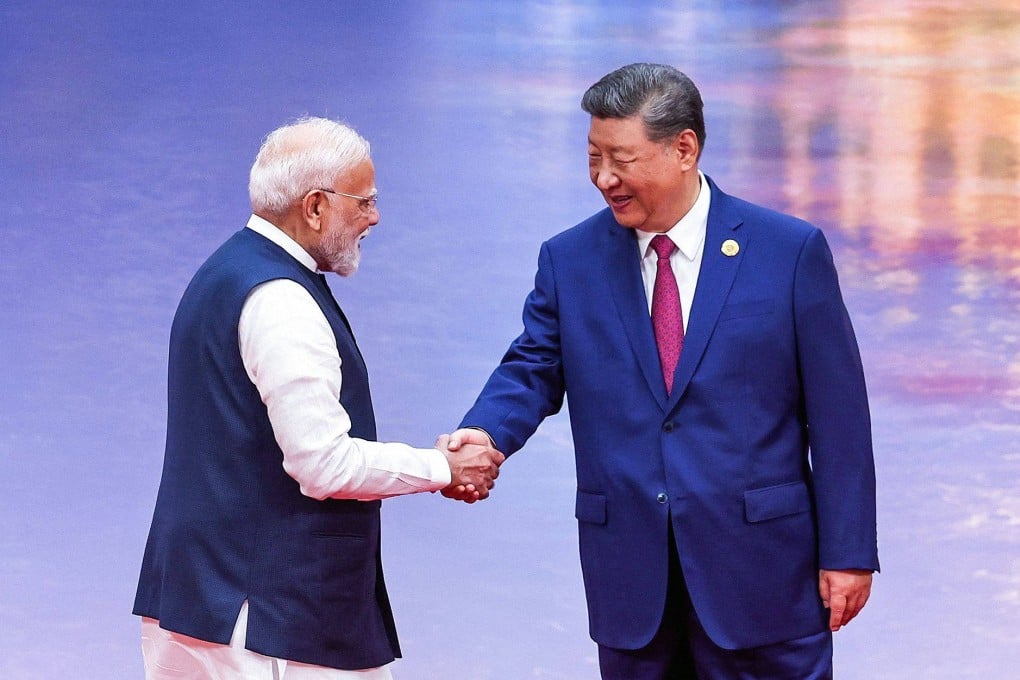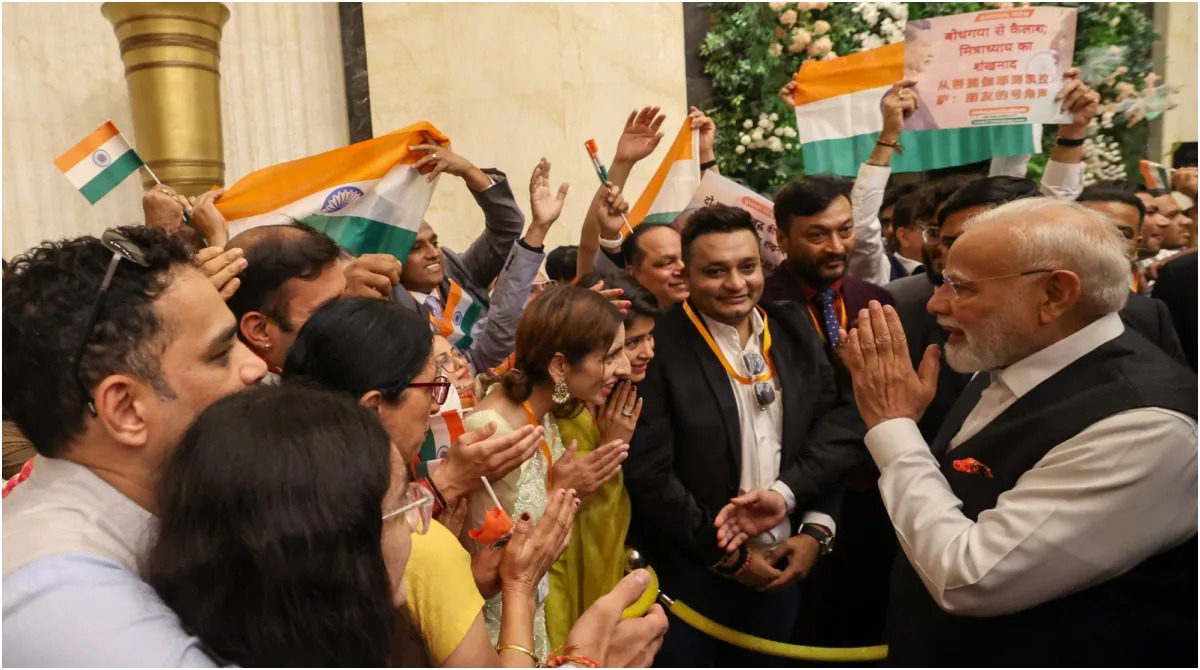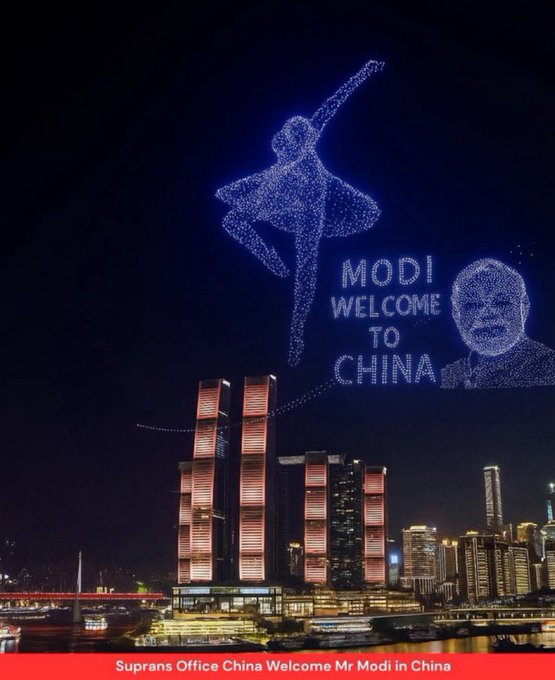Donald Trump’s protectionist policies and strained diplomacy have damaged U.S. relations with key allies, including India, which has responded by seeking closer ties with China. This emerging Sino-Indian rapprochement marks a potential shift toward a more multipolar global order led by Asian powers.

Chinese President Xi Jinping and Indian Prime Minister Narendra Modi (L) shake hands during the welcoming ceremony of the Shanghai Cooperation Organisation summit in Tianjin on August 31. (Photo: Indian Press Information Bureau).
Since his return to power, U.S. president Donald Trump has been alienating America’s closest allies on a whole range of issues. Europe has been perturbed by his lukewarm support for Ukraine after years of transatlantic unity in the face of an aggressive Russia. Asian allies have been alarmed by the Trump administration’s roughshod immigration policy, including the highly controversial detention of hundreds of South Korean citizens at a Hyundai plant in Georgia. Nor were Asian allies, from Japan to Australia, enamored with America’s sustained pressure to develop a joint military strategy in an event of a contingency in Taiwan. Both Tokyo and Canberra have demurred from getting directly involved in any potential conflict in Taiwan.
To top it all, the Trump administration’s trade protectionism and, consequently, imposition of massive tariffs and highly asymmetrical trade deals on major industrialized economies of Europe and Asia only further eroded trust between Washington and its closest partners. In response, former Japanese Prime Minister Shigeru Ishiba lashed back at the U.S. by declaring: "If they think Japan ought to follow what America says as we depend heavily on them, then we need to work to become more self-sufficient in security, energy and food, and less dependent on America." America’s closest ally in Asia spoke of nothing less than a "battle” for its “national interest," which “won't be taken lightly."
The disastrous turn of U.S.-Japan ties in recent months cost Ishiba the top post, but the lesson for his successors and other top U.S. allies is clear: America’s new protectionism makes no distinction between friends and foes. Arguably, no country has been as shocked and disappointed by the sudden nadir in its bilateral relations with America than India. To the South Asian power’s chagrin, the Trump administration has not only imposed a stricter immigration policy against hundreds of thousands of high-earning Indian citizens working in America’s lucrative tech sector, but has even gone so far as arming Islamabad not long after the latest India-Pakistan conflict. Even worse, the U.S. imposed a hefty 50 percent tariffs on Indian exports, thus ending a decade of burgeoning ties between Washington and Asia’s other rising superpower.
In response, Indian Prime Minister Narendra Modi has adopted a defiant patriotic position, warning against “economic selfishness," calling for “self-reliance," and, crucially, pursuing a rapprochement with China. The India’s leader’s cordial and fruitful meeting with Chinese paramount leader Xi Jinping on the sidelines of this year’s annual Shanghai Cooperation Organization (SCO) summit in Tianjin signals New Delhi’s displeasure with America. But, it could also be a harbinger of a new era of Sino-Indian cooperation, which would be pivotal to the creation of a truly post-American multipolar order in the 21st century.

Indian Prime Minister Modi receives a warm welcome from members of Indian community in Tianjin, China, September 1, 2025. (Photo Narendra Modi X)
Strategic Rollercoaster
It’s hard to understate the ebbs and flows of Sino-Indian relations in modern times. In the mid-20th century, then Indian Prime Minister Jawaharlal Nehru was singularly committed to developing a common cause with fellow post-colonial nations as well as communist China. During the famed Bandung Conference in 1955, Nehru stood along with Chinese Premiere Zhou Enlai as one of the pillars of “Third World” solidarity in face of Western neo-colonialism and Soviet belligerence.
The legendary Indian leader was so committed to solidarity with China that he even reportedly turned down an offer for his country join the United Nations Security Council (UNSC) as a permanent member. This was both in protest to West-sponsored Taipei’s (temporary occupation) of Beijing’s rightful seat in the Council as well as avoiding the possibility of replacing China in the powerful body at the UN.
Nehru’s dream of an enduring alliance with China, however, was shattered by the 1962 border war, which humiliated India and radically altered New Delhi’s threat perception vis-à-vis Beijing. An enraged Nehru lashed out at the communist power by warning of “the most aggressive form of imperialism functioning across our borders” and criticizing China for “invading a friendly country without rhyme or reason or excuse and justifying it by saying that they are being attacked.” For China, however, they pursued what they felt was reclaiming what was rightfully its own in defiance of the Western-imposed colonial borders in the Himalayas.
The end of Cold War, which saw both countries embracing market reforms and economic globalization, provided an additional impetus for restoring bilateral ties. Way into the 2000s, New Delhi politely consciously shunned any entanglements with Western powers, thus dooming the early iteration of the Quadrilateral Security Dialogue, better known as the “Quad." Taking a page from Nehru, Indian Prime Minister Manmohan Singh remained committed to the principle of “non-alignment," namely avoiding siding with any power bloc against another.
Interestingly, it was the Modi administration that proved even more enthusiastic about developing close ties with China. Drawing on his experience as the former chief of Gujarat, which has benefited from large-scale Chinese investments, Modi actively pursued charm offensive vis-à-vis his Chinese counterpart, Xi, who proved receptive to the notion of a resurgent Global South. A series of increasingly deadly clashes in disputed borders in the Himalayas, however, torpedoed the once promising Modi-Xi confab.

A New Dawn?
Against the backdrop of rising territorial tensions with China, India pivoted towards the West, particularly Washington. U.S.’ decision to cooperate with India in key sectors such as nuclear technology paved the way a decade of increasingly warm relations. During his first stint in power, Trump actively embraced China as a pillar of an “Indo-Pacific” era, which culminated in the consolidation of the Quad as a new power bloc with an eye on a rising China.
Buoyed by rapidly blossoming ties with the West, India adopted an increasingly hostile position vis-à-vis China by both embracing economic decoupling -- including banning up to 200 Chinese apps in the name of national security, and actively presenting India as an alternative manufacturing hub for Western companies – as well as doubling down on the Quad and increasingly high-stakes defense cooperation with China’s rivals in East Asia. Not only did India begin expanding its naval presence across the South China Sea, but it also began exporting advanced strategic weapons to Southeast Asian claimant states such as the Philippines.
Trump’s unilateral imposition of tariffs, coupled with strategic flirtation with Pakistan, has forced India to reassess its foreign policy approach. Meanwhile, China has deftly reached out to fellow non-western powers as part of its Global Governance Initiative, which seeks to establish a multipolar international order. Meanwhile, the Indian leader praised the overall trajectory of Sino-Indian ties as “fruitful” and based on “mutual respect, mutual interest and mutual sensitivity." Following Modi’s first visit to China in seven years, the two countries have resumed direct flights.
So far, India’s embrace of China seems more tactical, aimed at signaling displeasure with Trump and reminding the world of New Delhi’s wide strategic options. Should China and India find a lasting modus vivendi over their territorial disputes, and press ahead with strategic investments and durable confidence-building measures, the two Asian juggernauts are in a prime position to jointly shape a new global order. From SCO to the BRICS and the UN, New Delhi and Beijing have shared interest in resisting America’s strategic excesses and, crucially, facilitating new global initiatives that ensure long-term economic development and global security. The path ahead is fraught with challenges, but Modi and Xi now have a second chance to underwrite a new golden era of Sino-Chinese cooperation.
